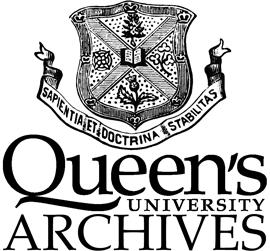Pages
page_0001
Rokeby Rectory Barnard Castle 10 Durham
August 3. 1933
Dear Mr. Buchan
(For I once met you some years ago at my sister's, Mrs. Forman, at Borthwickshiels, when you opened a Hall in Roberton parish & I well remember the delightful speech you gave us on the occasion.)
I have just been reading your book 'The Massacre of Glencoe' so graphically & powerfully told in a way that cannot but impress - as it certainly has me - all its readers. There are, however, one or two statements & references in the book - which seem to call for reconsideration.
(1) on page 52 Appin Kirk That was built only in 1749 (that is to say, in the first year of Colin of Glenure's Campbell factorship of Appin) see N.S.A. Vol. VII Argyle p. 252. Previous to that year there was no church in Appin - only the parish church in the island of Lismore.
(2) on page 105 Crodh Chalein. Is not this emphatically a Breadalbane song whose habitat is Glenlyon not Glencoe? Its historical basis is a cattle raid 40 years earlier by Macdonalds (of Keppoch) during the minority of this very Glenlyon of Glencoe notoriety. In the fight in which the raiders were beaten off, and the cows recovered, one of the milkmaids was killed, & the other subsequently composed the song. See Stewart's 'A Highland Parish' pp. 197 & 356, who gives the song in Gaelic, including the verse which refers to the killing of her companion.
(3) on page 122 Lament of Macruimen. Surely the mention of this in 1692 is an anachronism. Does not the Lament 'cha till, cha till, cha till MacCruimein' express the forebodings felt at MacCrimmon's setting out from Skye on the expedition which ended in the
page_0002
Rout of Moy (February 1746) and resulted in his death there?
(4) Bidean nam Bian on page 168. I question much your derivation given in your note. Any Gaelic speaking Highlander's ear would easily detect the difference in sound of the two words Bian & Béann, however like they may sound to the Sasunnach. If he calls it Bian, it can not be Beann, & vice versa. Besides 'cruach' is the word for a peak & familiar in the neigbouring Ben (nan) Cruachan. Nor do I see the explanation of this designation of Bidean to be meaningless (given by my grandfather N.S.A. Vol. VII argyle p. 471) e.g. In one of my parishes here (Brignall) there is a wood marked in O.S. map "Fames Wood", & Major Morritts Head Keeper told me that many years ago, the beaters on one occasion raised out of it such a phenomenal number of game of all sorts that it was soon afterwards called 'The famous wood' If then there was an old tradition that a vast number, whether of wolves or deer or boars, had once been killed there, the big hill might well have got to be known as 'Bidean of the Skins'.
As your book, I feel sure, will go though many reprints, I thought you might like to have your attention called to these points however insignificant you may think them. That at least is my only reason for writing to you on the subject.
I remain
Truly yours
A. Campbell Fraser




